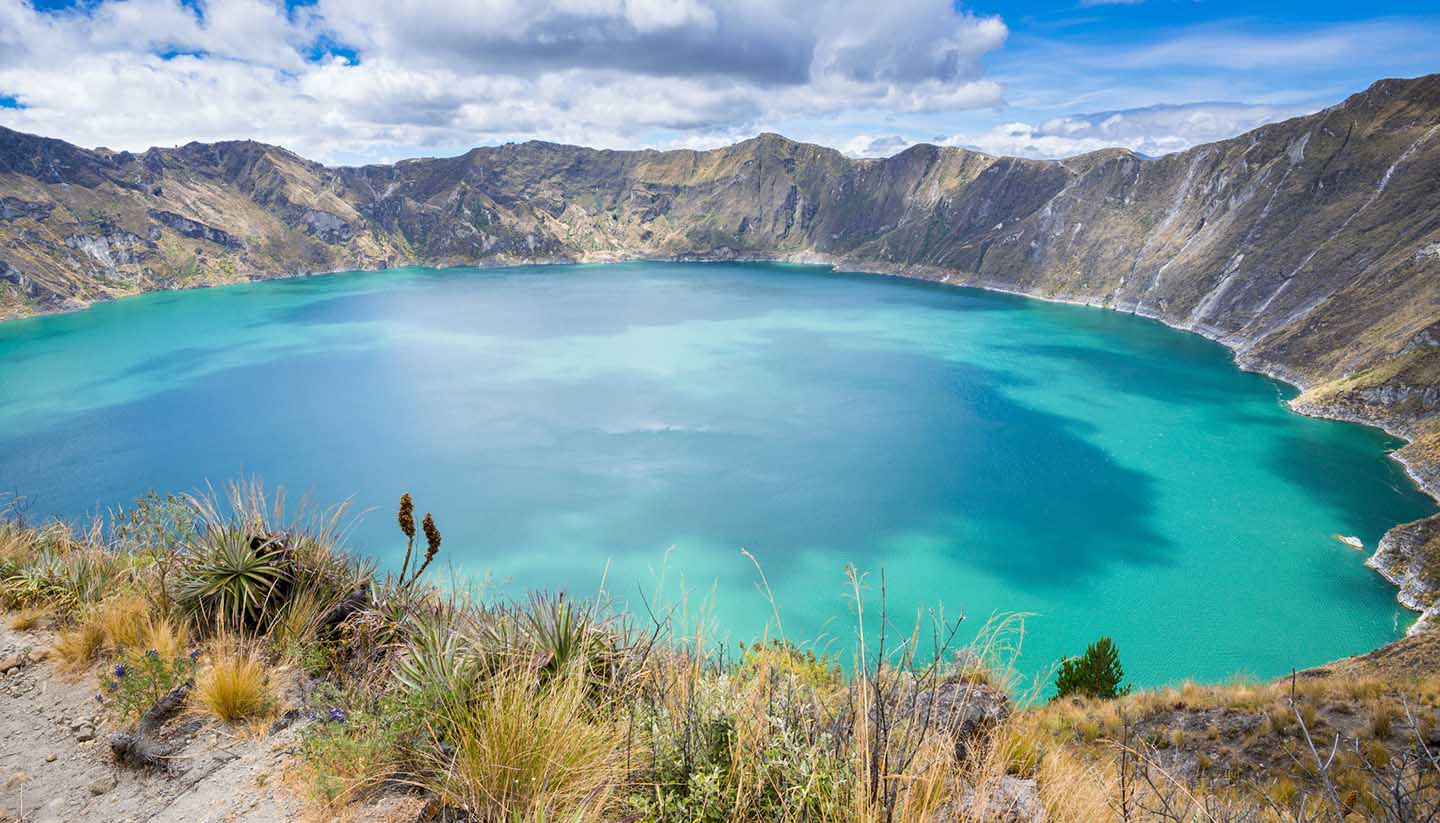Getting Around Ecuador
Air
Ecuador is a small country and internal flight times are usually less than one hour, making air travel a quick and easy way to get around. Most flights operate out of Quito although Guayaquil also has direct services to main centres such as Cuenca, Loja and Galapagos.
TAME (www.tame.com.ec) and LATAM (www.latam.com) fly frequently between Guayaquil, Quito and other destinations throughout the country. A number of small airlines serve the coast and eastern part of the country. Flying is the usual mode of transport for intercity travel.
Galapagos Islands: There are daily flights to the Galapagos Islands on national airlines from both Quito and Guayaquil; note that airfares to Galapagos are much higher than to any other domestic destination, although there are discount fares for Ecuadorian nationals and residents of Galapagos. There is also a national park admission charge, payable in cash only.
Departure tax
Included in the air fare.
Air Note
If you don’t have a ticket there is the option to go along to the airport and join a waiting list for the flight as people frequently don’t turn up.
Road
Side of the road
RightRoad Quality
The Panamericana or Pan-American Highway is largely in good condition; there are still plenty of potholes in places though and some roads are more akin to rough tracks. Roads in the highlands can be especially bad due to the weather and cracks or holes here can be sizeable.
Road Classification
An extensive network of roads spreads out from the main north-south axis of the Pan-American Highway. There is a lack of road markings and signage, so driving at night is particularly best avoided.
Car Hire
Since getting around by public transport is so easy, few people rent cars in Ecuador. Nonetheless there are international and local car hire companies operating in Ecuador, with cities such as Quito, Guayaquil and Cuenca the places to arrange pick-up and drop off. It may be difficult to hire a vehicle in smaller towns, and even in main cities you should arrange your vehicle hire in advance. 4-wheel drive is necessary for some areas.
Drivers need to be at least 25 years old and have a major credit card for the deposit. Some companies hire cars to those aged 21-25 but the surcharges are much higher. Check for existing damage and make sure the car comes with a spare tyre and a jack. Drive carefully, make sure the car is always secure and check what the car rental insurance policy covers.
Taxi
These are widely available, particularly in larger cities and towns. Fares tend to be low but should be negotiated in advance. Taxis are metered in Quito, but rarely elsewhere. Taxis may be hired for a whole day. Drivers do not expect tips. All licensed taxis have a registration number prominently displayed; note this if there’s a problem or if you feel threatened or mistreated.
Bike
Increasingly popular, cycling is a good, if somewhat strenuous way of seeing Ecuador. Mountain bikes are recommended and you should ideally bring your own as bike hire services are scarce outside of Quito. Bring your own spares too. Bikes can also be taken on buses, canoes and almost every other type of transport if you find you’ve run out of energy. Organised bike tours in Ecuador tend to be one-day trips, and mostly downhill, having been ferried to the top of the descent in a car by the company you book with.
Coach
Ecuador’s bus and coach service is extensive and affordable. Taking a bus can be an exhilarating, exciting way of seeing the country although it can also be cramped and scary too given the recklessness with which some drivers tackle corners and overtaking.
There are a number of different companies throughout the country and services to almost anywhere that you might want to go. Some of the most established have their own bus stations separate from the main terminals (terminal terrestres) and operate air-conditioned, comfortable buses, ideal for longer distance journeys.
Regulations
The national speed limit is 90kph (55mph) on highways and around 50kph (30mph) in urban areas, unless otherwise indicated. There are strong penalties for even the most minor driving offences.
Documentation
An International Driving Permit is not required, but insurance is.
Urban travel
Guayaquil and Quito have bus and minibus services operating at flat fares. Buses usually have a board in the window displaying their route.
Rail
After years of neglect, the line between Quito and Guayaquil reopened in 2013. Tren Ecuador (tel: 1800 873 637; www.trenecuador.com) runs luxury trains on this route.
Tren Ecuador also runs the famous Nariz del Diablo (Devil's Nose), which makes a spectacular mountain descent on its route between Riobamba and Sibambe. Also worth booking is its excursion from Quito to El Boliche, near Cotopaxi.
RailNote
Tickets for the Devil’s Nose ride can be bought a day in advance. Reservations for the Boliche service are not necessary. People tend to ride on the roof of the train for the most exhilarating experience.
Water
Ecuador's rocky coastline makes coast-hopping an inefficient and even dangerous means of transport for visitors. Several navigable rivers flow eastwards into the Amazon basin. Dugout canoes, which carry up to about 25 people, are widely used as a means of transport in roadless areas, particularly in the Oriente jungles and in the northwest coastal regions.
Tourist boats, luxury cruisers, converted fishing boats and hired yachts can all be used to travel between the Galápagos Islands.


